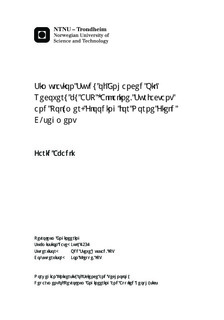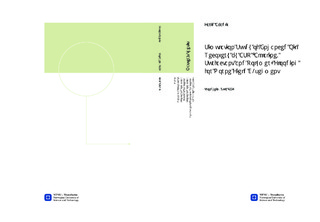| dc.contributor.advisor | Hustad, Odd Steve | nb_NO |
| dc.contributor.advisor | Kleppe, Jon | nb_NO |
| dc.contributor.author | Abadli, Farid | nb_NO |
| dc.date.accessioned | 2014-12-19T12:16:38Z | |
| dc.date.available | 2014-12-19T12:16:38Z | |
| dc.date.created | 2012-11-11 | nb_NO |
| dc.date.issued | 2012 | nb_NO |
| dc.identifier | 567052 | nb_NO |
| dc.identifier | ntnudaim:7503 | nb_NO |
| dc.identifier.uri | http://hdl.handle.net/11250/239882 | |
| dc.description.abstract | This research is a simulation study to improve total oil production using ASP flooding method based on simulation model of Norne field C-segment. The black oil model was used for simulations. Remaining oil in the reservoir can be divided into two classes, firstly residual oil to the water flood and secondly oil bypassed by the water flood. Residual oil mainly contains capillary trapped oil. Water flooding only is not able to produce capillary trapped oil so that there is a need for additional technique and force to produce as much as residual oil. One way of recovering this capillary trapped oil is by adding chemicals such as surfactant and alkaline to the injected water. Surfactants are considered for enhanced oil recovery by reduction of oil water interfacial tension (IFT). The crucial role of alkali in an alkaline surfactant process is to reduce adsorption of surfactant during displacement through the formation. Also alkali is beneficial for reduction of oil-water IFT by in situ generation of soap, which is an anionic surfactant. Generally alkali is injected with surfactant together. On the other hand, polymer is very effective addition by increasing water viscosity which controls water mobility thus improving the sweep efficiency.In the first place, ASP flooding was simulated and studied for one dimensional, two dimensional and three dimensional synthetic models. All these models were built based on C-segment rock properties and reservoir parameters. Based on test runs, well C-3H was selected and used as a main injector in order to execute chemical injection schemes in the C-segment. Five studies such as polymer flooding, surfactant flooding, surfactant-polymer flooding, alkaline-surfactant and alkaline-surfactant-polymer flooding were considered in the injection process and important results from simulator were analyzed and interpreted. Sensitivity analyses were done especially focusing on chemical solution concentration, injection rate and duration of injection time. The polymer flooding project in this study has shown a better outcome compared to water flooding project. Economically best ASP solution flooding case is the flooding with concentration of alkaline at1.5kg/m3, surfactant at 15kg/m3 and polymer at 0.35 kg/m3 injecting for 5 years. AS flooding case for 4 years with alkali concentration at 0.5kg/m3 and surfactant concentration at 25 kg/m3 gave highest NPV value. It was found that surfactant flooding has a promising effect and it is more profitable than polymer flooding for the C segment in terms of NPV. Economic sensitivity analysis (Spider diagram) for low case, base case and high case at different oil prices, chemicals prices, and discount rate were also presented. It was found that change in oil price has significant effect on NPV compared to other parameters while polymer price has the least effect on NPV for high and low cases. | nb_NO |
| dc.language | eng | nb_NO |
| dc.publisher | Institutt for petroleumsteknologi og anvendt geofysikk | nb_NO |
| dc.subject | ntnudaim:7503 | no_NO |
| dc.subject | MSG1 Petroleum Engineering | no_NO |
| dc.subject | Reservoir Engineering | no_NO |
| dc.title | Simulation Study of Enhanced Oil Recovery by ASP (Alkaline, Surfactant and Polymer) Flooding for Norne Field C-segment | nb_NO |
| dc.type | Master thesis | nb_NO |
| dc.source.pagenumber | 99 | nb_NO |
| dc.contributor.department | Norges teknisk-naturvitenskapelige universitet, Fakultet for ingeniørvitenskap og teknologi, Institutt for petroleumsteknologi og anvendt geofysikk | nb_NO |

